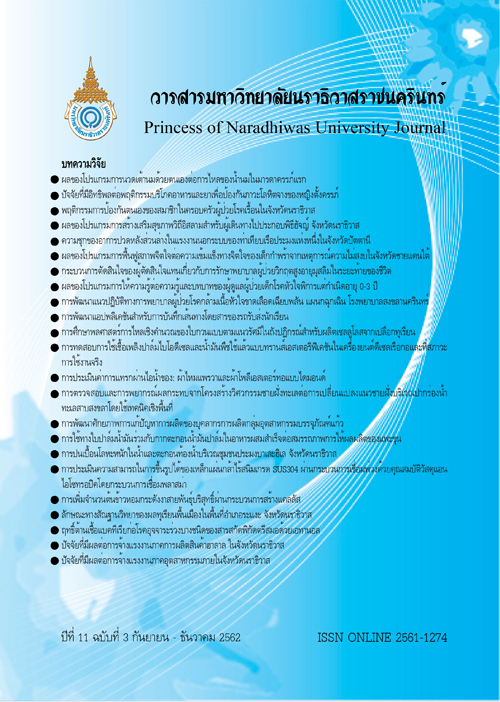Formability Evaluation of SUS304 Stainless Steel Tailor Weld Blank Sheets (TWB) with Anisotropic Material Behavior by Plasma Welding Process
-
Keywords:
Mechanical property, Tailor welded blank, Plasma welding, stainless steelAbstract
The objective of this research is to study the factors that affect the cup deep drawing of the austenitic stainless-steel type 304 based on the mechanical properties of the tailor welded blank. The variables are a group of SUS-304 stainless steel with different thickness (0.4, 0.5 and 0.6 mm) and weld lines oriented at an angle of 0O, 45O and 90O with the blank holder force of 2500 kgf and the forming speed of 6 SPM. The mechanical properties of tensile strength and elongation after forming were investigated. According to the results of this experiment, tensile strength of SUS-304 stainless steel after the plasma welding shows that the best anisotropic property was at the angle of 45O to the direction of drawing process and that the plasma welded deep drawing process of SUS-304 stainless steel using 2500 kgf of blank holder forced at the thickness ratio of T1 0.4 – T2 0.4 causes 28.20% decrease in the punch radius which results in elongation of the test piece but no rupture found, so this condition is suitable for the study.
References
Chan, S.M., Chan, L.C. &Lee, T.C. Tailor–welded blanks of different thickness ratio effects on forming limit diagrams. The Hong Kong Polytechnic University.
Davies, R.W.,Smith, M.T., Oliver, H.R., Khaleel, M.A. and Pitman, S.G., (2000). Weld Metal Ductility in Aluminum Tailor Welded Blanks. Metallurgical and Materials Transactions, 2000-2755.
Kinsey, Brad, Song, Nan and Jian Cao. (1999). An Analytical Model for Tailor Welded Blank Forming. Transactions of the ASME, 125, 344-351.
Komsan Ngamkham. (2007). Alternative: Forming limit of austenitic grade stainless steels in various thicknesses. Faculty of Engineering, Srinakharinwirot University. [in Thai]
Marciniak, Z Duncan, J.L. and. Hu, S.J. (2002). Mechanics of Sheet Metal Forming. House Jordan Hi Oxford, Butterworth-Heinemann, Second edition, 30-128.
Phillps, David H. (2016). Welding Engineering. An lntroduction, 44-49.
Sompong Chueaprakha and Dilok Sriprapai. (2005). The Study for Springback of the of Tailor- Welded Strips
in Draw-Bending Process. The 20th Conference of Mechanical Engineering Network of Thailand. [in Thai]
Song, Song&Lin Hua. (2014). Influences of thickness ratio of base sheet on formability of tailor welded blanks. Wuhuan University of technology.
Thailand Automotive Institute, (2002). Motor Vehicle Record, Retrieved from https://www.thaiauto.or.th/2012/




